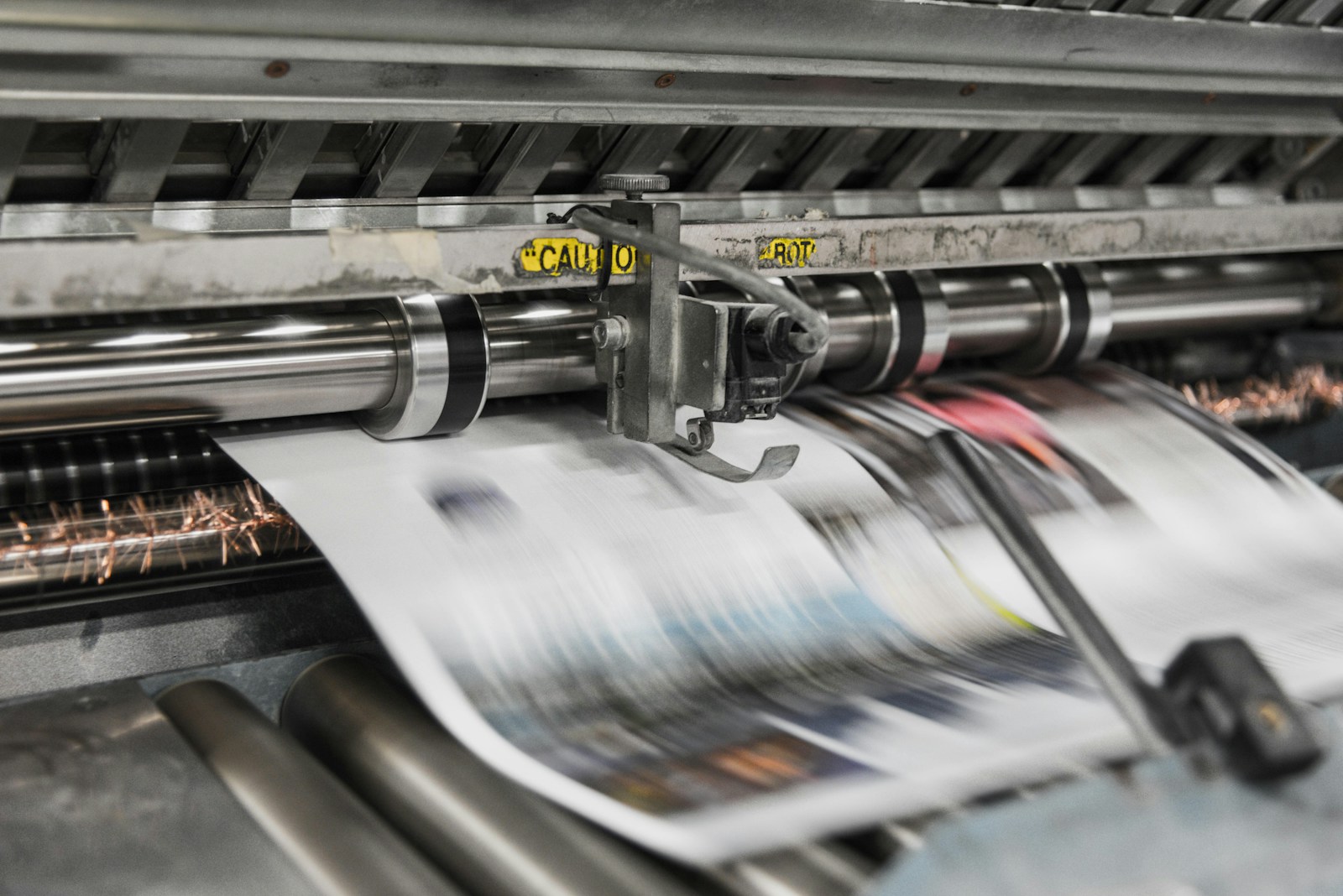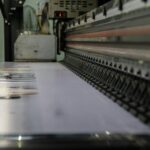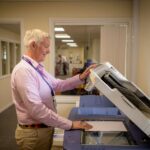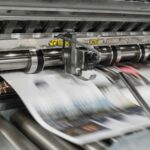Koenig & Bauer—one of the world’s oldest and most respected printing press manufacturers—has officially teamed up with Siemens to push printing automation into a new era. Their collaboration centers on creating a next-generation modular automation platform using Siemens’ open digital business platform, Xcelerator. The goal is ambitious but timely: simplify development, accelerate deployment, and deliver smarter, more adaptive printing presses to meet the rapidly evolving needs of the print industry.
Why This Matters Now
The printing industry is at a crossroads. Pressures from digitization, sustainability goals, supply chain shifts, and shrinking margins are forcing manufacturers to evolve quickly. Traditional development cycles and rigid machine designs no longer cut it. By leveraging Siemens’ industrial software tools—like Teamcenter for PLM, NX for product engineering, and the Simatic AX engineering platform—Koenig & Bauer aims to completely reimagine how presses are designed, built, and maintained.
This isn’t just a digital facelift. It’s a complete structural overhaul aimed at enabling modular, scalable, and software-defined printing systems. That means future printing presses can be updated, customized, and optimized without full hardware redesigns—a massive benefit for commercial printers looking to stay competitive.
Key Innovations in the Partnership
🧠 Smarter Engineering Workflows
Using Siemens’ digital twin technology, Koenig & Bauer can now model and simulate their presses in a virtual environment long before any physical parts are made. This reduces time-to-market, improves precision, and allows for extensive testing of mechanical and automation systems in real-time conditions.
🛠️ Modular Automation
The duo is developing a modular automation toolbox tailored to Koenig & Bauer’s product lines. This ensures components—from software to sensors—can be reused and reconfigured quickly, making future machine iterations much faster and more cost-effective.
📊 Predictive Maintenance & Live Performance Dashboards
By embedding Siemens’ industrial IoT tools, these presses will be able to provide real-time status updates, maintenance forecasts, and insights down to the component level. That reduces unplanned downtime and enables just-in-time service models—huge cost savers for production floors.
💻 Simatic AX and Software Versioning
Simatic AX lets engineers use modern DevOps workflows, version control, and structured libraries when programming PLCs. This improves code transparency, simplifies debugging, and shortens update cycles.
What the Companies Are Saying
“With Siemens Xcelerator, we’re equipping Koenig & Bauer with a modular automation toolbox that enables maximum flexibility, openness, and future viability,” said Rainer Brehm, CEO of Factory Automation at Siemens.
Koenig & Bauer CEO Dr. Andreas Pleßke emphasized the strategic importance: “This collaboration massively boosts our innovation capacity. We’re laying the foundation for a highly agile generation of printing presses—and putting our customers in a stronger competitive position.”
Industry Impact & Strategic Value
This move is a textbook case of Industry 4.0 in action—a blending of mechanical engineering, automation, and software to create intelligent machines that adapt to market demands in real time. For Koenig & Bauer, it means faster delivery of new machines, better customer customization, and a clear path toward net-zero-ready, data-driven production. For Siemens, it’s another milestone in expanding its influence in vertical-specific industrial automation.
But more broadly, this alliance may set a precedent for how industrial equipment is developed across sectors like packaging, textiles, and label printing. Modular, software-defined machines with digital twins and predictive analytics are no longer a luxury—they’re rapidly becoming the baseline.
Final Word
The Koenig & Bauer–Siemens partnership is more than just a collaboration; it’s a roadmap for the future of print manufacturing. As modularity and digitalization become essential rather than optional, this alliance could serve as a blueprint for other OEMs looking to modernize without starting from scratch. Expect ripple effects across the automation and print ecosystem over the coming years.
Key Takeaways
- This partnership is all about making modular automation better and speeding up how quickly new presses get built.
- Siemens’ Xcelerator platform is front and center in Koenig & Bauer’s digital transformation.
- The two companies are working on machinery that’s built to last and designed for commercial printers who want to run leaner, smarter operations.
Overview of the Koenig & Bauer and Siemens Partnership
Koenig & Bauer and Siemens have teamed up in a pretty ambitious alliance, aiming to shake up printing press automation by fusing their tech and experience. Each brings something unique to the table—one’s a printing machinery expert, the other’s a digital automation powerhouse.
Objectives of the Collaboration
The big goal here is to revamp Koenig & Bauer’s modular automation systems. Both sides are rolling up their sleeves to make sure hardware and software work together seamlessly in printing presses. If they pull it off, developing and commissioning new machines should get a lot quicker.
Their joint focus is on machinery that’s not just “good enough for now,” but really ready for whatever’s next—raising the bar for modularity and efficiency. With Koenig & Bauer’s print background and Siemens’ automation tech, they want to make production systems that can actually keep up with fast-changing demands.
A major part of this is weaving Siemens’ Xcelerator platform into the heart of printing press development. That digital backbone should mean faster innovation cycles and more nimble manufacturing for Koenig & Bauer’s customers.
Historical Context of Both Companies
Koenig & Bauer isn’t just another player—they’re the world’s oldest printing press manufacturer, with roots going back over 200 years. Since 1817, they’ve been inventing and reinventing printing tech, riding out every wave of industrial change.
Siemens, on the other hand, kicked off in 1847 and has become a global tech giant. Their automation division has been a big deal in industrial digitalization for ages, helping manufacturers across all kinds of sectors.
Both are classic examples of German engineering, obsessed with precision and quality. They’ve crossed paths before in the industrial world, but this is by far their boldest joint project.
Strategic Significance in the Printing Industry
Honestly, the timing couldn’t be more interesting. The printing industry is under pressure to go digital and automate, and this partnership puts both companies in a much stronger spot than if they were going it alone.
By bringing Siemens’ digital skills into Koenig & Bauer’s printing systems, customers get smarter, more connected machines. That means less time spent setting up, less waste, and a much better ability to pivot when the market shifts.
This move also helps both companies hold their ground against up-and-coming competitors. As digital printing keeps shaking things up, this partnership ensures the old-school machinery evolves, not just gets left behind.
A lot of industry watchers are calling this a smart, strategic play—one that could nudge other manufacturers to rethink how they handle automation and digitalization over the next few years.
Innovations in Printing Press Automation
Koenig & Bauer and Siemens aren’t just talking a big game—they’re actually rolling out automation solutions that are starting to change how the printing industry works. Their collaboration is about building modular systems that make everything run smoother and more efficiently.
Integration of Siemens Automation Technologies
At the heart of this partnership is the push to bake Siemens’ advanced automation tech right into Koenig & Bauer’s printing presses. The result? A standardized, modular platform that seriously speeds up everything from development to getting machines up and running.
With this system, machine setup times drop, and day-to-day operations get a lot more straightforward. Engineers from both companies are pooling their know-how—Siemens brings the automation, Koenig & Bauer brings the print smarts.
Here’s what stands out:
- Quicker setup and calibration
- More reliable machine performance
- Easier upgrades and maintenance (no more endless headaches)
- Operator interfaces that don’t require a PhD to use
Since it’s modular, print shops can pick and choose the automation features they want—no need to rip out everything and start from scratch.
Digital Transformation of Printing Workflows
This partnership is fast-tracking the shift from old-school, manual workflows to digital ones. The new tools they’re rolling out let operators monitor everything in real time, with dashboards that actually make sense.
Now, operators can see:
- How each machine is performing
- Efficiency stats
- Maintenance alerts before things break
This digital leap means companies can make smarter, data-driven decisions. The system also supports:
- Real-time production tracking
- Predictive maintenance (catching issues before they’re a problem)
- Remote diagnostics
- Ties into business management systems
All of this helps cut down on downtime and keeps production humming along. Plus, remote support means techs can help out without hopping on a plane.
Advancements in Print Quality and Efficiency
The Koenig & Bauer-Siemens team-up is making a real difference in print quality and overall efficiency. Their tech gives operators tighter control over print settings, so finished products look sharper and more consistent.
Automated quality control is a big deal here—sensors and cameras catch flaws on the fly and adjust things in real time. That means less waste, and the output stays solid no matter how long the run.
Efficiency-wise, you get:
- Faster job changeovers
- Less wasted material
- Lower energy bills
- Higher throughput speeds
Plus, the tech makes it possible to do shorter, personalized print runs without killing productivity. Shops can take on more niche jobs, open new revenue streams, and still keep quality high.
Impact on the Commercial Printing Sector
The Koenig & Bauer and Siemens partnership is really starting to make waves in commercial printing. By weaving together advanced automation and digital tools, they’re tackling some of the industry’s biggest headaches—and opening up new possibilities for how print shops operate.
Benefits for Printing Businesses
Print companies that jump on board with these new systems are seeing some pretty eye-popping improvements. Setup times are dropping by as much as 30%—which, if you’re running a busy shop, is huge.
Maintenance bills are shrinking too, thanks to predictive analytics that spot problems before they turn into disasters. That means machines last longer and service calls are less of a fire drill.
Automated inspection is making quality control more reliable. Flaws get caught right away, so less waste and happier customers.
The digital upgrades also make it way easier to switch between print jobs. Short-run printing is finally profitable, and shops can chase new business that used to be out of reach.
Case Studies of Early Adopters
Regional Print Solutions, a mid-sized German print shop, rolled out the Koenig & Bauer and Siemens system in late 2024. Three months in, they were already up 22% in productivity and had cut material waste by 15%.
Their production manager summed it up: “The digital workflow integration has eliminated most of our manual process adjustments.”
Global Graphics Group brought the tech into their packaging division and saw:
- 40% faster job changeovers
- 28% less setup material used
- 18% better color consistency
SmartPrint, a specialty printer in North America, used the new system to branch out into fresh markets. Being able to quickly swap between different substrates grew their customer base by 25% in just half a year.
Frequently Asked Questions
The Koenig & Bauer and Siemens partnership has sparked a bunch of changes in printing press automation technology. Their work together is all about digital transformation and modular automation—basically, making presses smarter and easier to run.
What are the key features of the new automation technology introduced by Koenig & Bauer in partnership with Siemens?
The new platform lets you configure machines virtually, so designs are way more flexible. Now, press builders can whip up custom solutions without all the usual headaches.
It’s built around Siemens’ Teamcenter product, which keeps everything organized and integrated. The modular approach means you can adapt automation to fit almost any printing job.
Plus, there’s digital twin tech—so you can simulate and tweak processes before touching the real hardware.
How will Koenig & Bauer and Siemens’s collaboration enhance the efficiency of printing presses?
The automation platform makes setting up presses a lot quicker. Builders can design, configure, and roll out solutions at a pace that just wasn’t possible before.
Virtual tools help catch errors before they hit the production floor, meaning less downtime and less wasted material.
And with real-time monitoring, you can make tweaks on the fly to keep everything running smoothly.
What are the anticipated impacts on the printing industry due to the collaboration between Koenig & Bauer and Siemens?
Expect to see digital transformation pick up speed across all sorts of printing operations. Companies using this tech are likely to get a leg up, thanks to better efficiency and quality.
Even smaller print shops can get in on advanced automation now—it’s not just for the big guys anymore. The modular setup makes it easier to scale up or down.
Honestly, this partnership could end up setting the new standard for how presses get built and run.
Can you describe the advancements in printing press technology as a result of Koenig & Bauer’s collaboration with Siemens?
Together, they’ve come up with machine concepts that won’t get left behind as the market evolves. These systems tie digital workflows right into the production process, from design to final print.
Better automation means more precise printing and consistent results, even when switching between jobs.
And with more data at your fingertips, it’s easier to spot ways to improve—so machines and print quality just keep getting better.
What types of printing operations will benefit most from the Koenig & Bauer and Siemens automation solutions?
Commercial printers juggling lots of different jobs will see the biggest efficiency boost. The automation platform really shines when you need to handle frequent changeovers.
Packaging printers will love the improved precision and consistency—especially important for brands that care about every detail.
Large industrial printers will appreciate all the data integration and analysis tools, which help optimize even the most complex operations.
How does the integration of Siemens technology into Koenig & Bauer’s printing presses improve operational workflows?
Bringing Siemens tech into Koenig & Bauer’s presses really ties together the design, configuration, and production steps—almost like it’s smoothing out all the little bumps that used to slow things down. You don’t have to deal with as many tedious manual tasks anymore, which is honestly a relief for folks on the floor.
Operators now get a more user-friendly interface and a bunch of monitoring tools right at their fingertips. It’s easier for them to keep an eye on quality and push for higher throughput without feeling overwhelmed.
Plus, there’s a lot more transparency when it comes to maintenance and operational data. It’s not just about fixing things when they break; you can actually spot issues before they become a problem, which should help avoid those annoying, unexpected shutdowns and keep the machines running longer.
